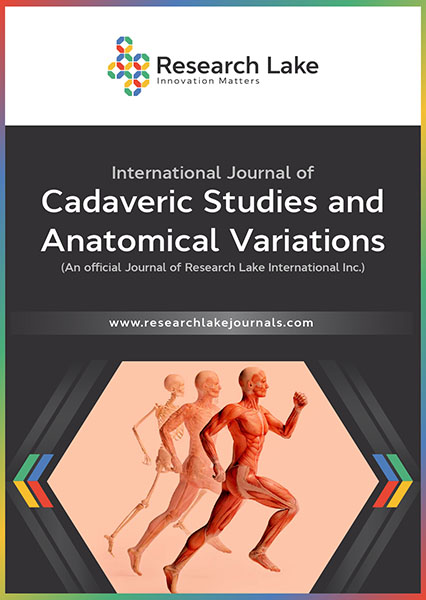The musculocutaneous nerve completely fused with lateral root , partially with median nerve while not perforating coracobrachialis muscle: Its embryological basis and literature review
Abstract
An rare anomaly of the musculocutaneous nerve was detected during routine dissection of the left upper limb of a 42-year-old Turkish male cadaver. MCN extend in a common sheath together with the lateral cord (LC) and lateral root of MN without leaving LC. The lateral and medial roots combined ventral to the axillary artery forming a common trunk of the MCN and MN. The MCN left the MN 0,5 cm distal to the junction of the lateral and medial roots of MN. It traveled between the biceps brachii and coracobrachial muscles without piercing the coracobrachial muscle and crossed over the axillary artery. Later, the MCN passed between the biceps and brahial muscles and continued as the lateral cutaneous nerve. No a prominent branch to the coracobrachialis muscle originating from MCN. It was observed that very thin branches extend from the lateral cord and MCN to the coracobrachialis muscle. A connection extending from the proximal of the LC to the point where the ulnar nerve originated in the distal part of the MC was also detected. A good knowledge of the anatomical variations for upper extremity surgical interventions and treatments helps surgeons to avoid potential errors during surgery. Considering that our case does not fit the cases in the classifications found in the literature, or is compatible with more than one proposed variation, we rarely find this variation, as we cannot really find anything similar.
Copyright (c) 2021 Cem KOPUZ, Nihal İçten

This work is licensed under a Creative Commons Attribution-NonCommercial 4.0 International License.
Copyright © by the authors; licensee Research Lake International Inc., Canada. This article is an open access article distributed under the terms and conditions of the Creative Commons Attribution Non-Commercial License (CC BY-NC) (http://creativecommons.org/licenses/by-nc/4.0/).















